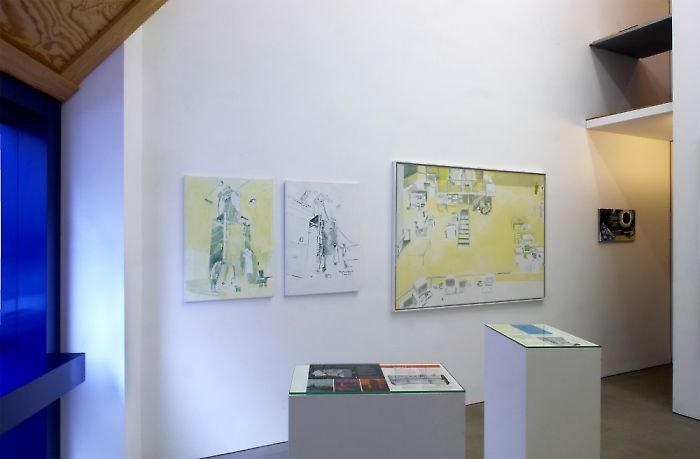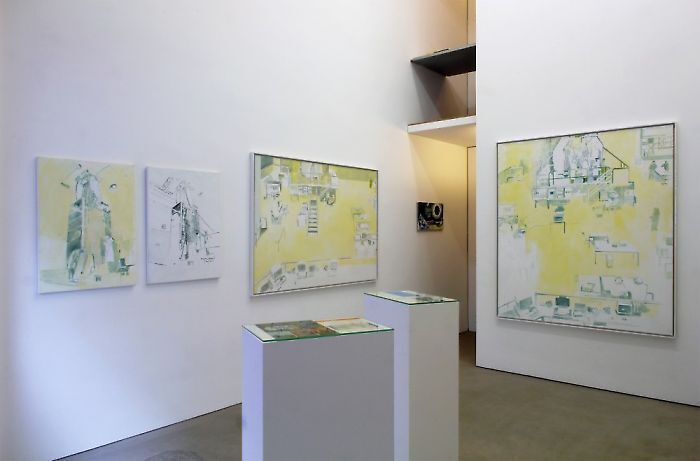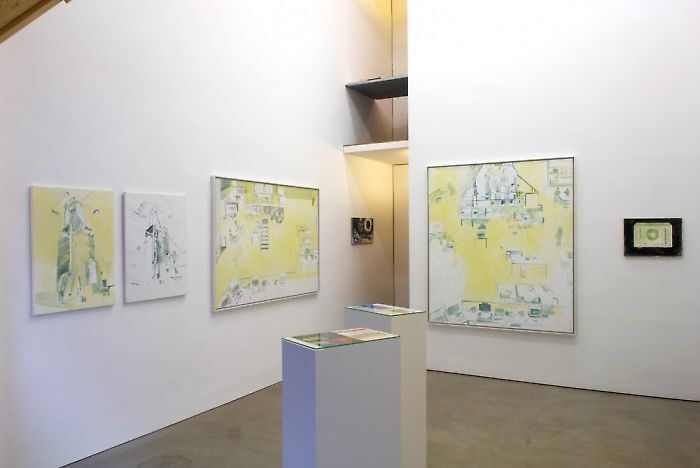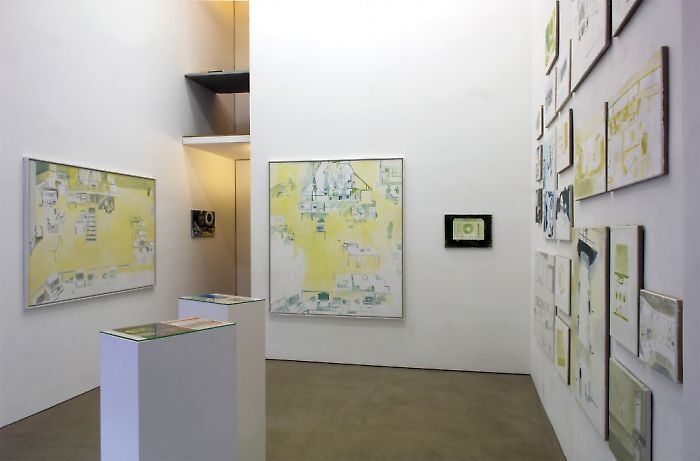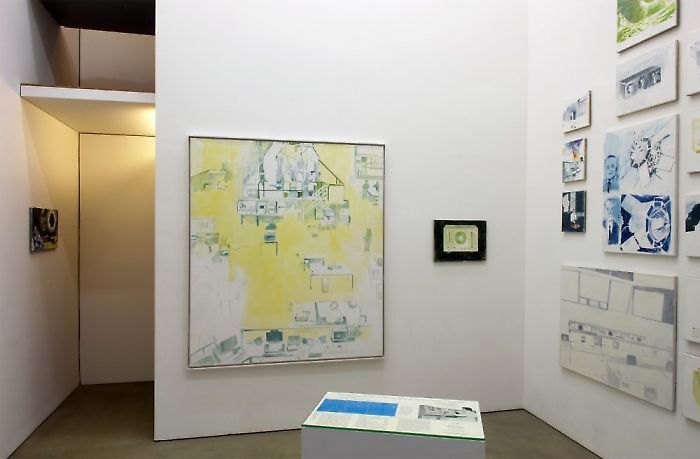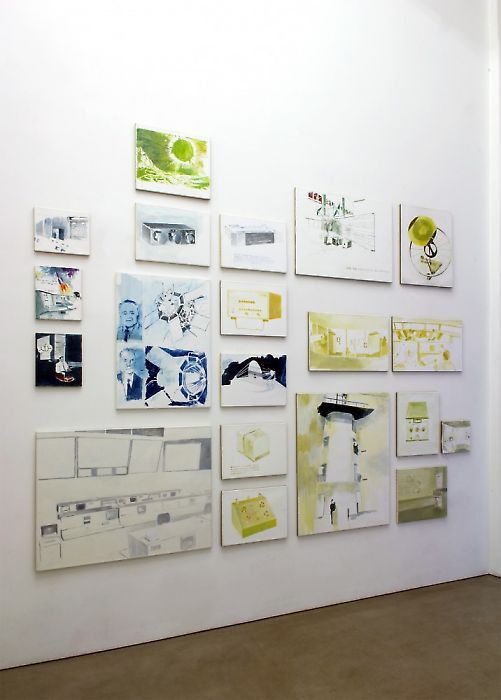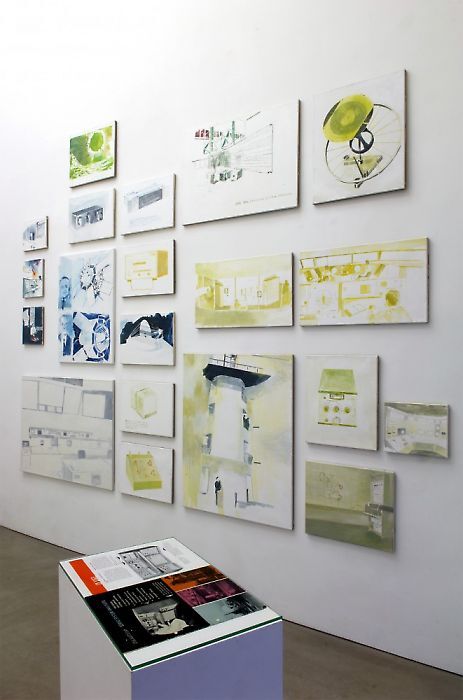—
Agnes Fuchs
This could put us years ahead
The question of the current status of painting refers to the pre-formulated character of visual worlds in which a democratization or adjacency of various media supports can be found. Images as depictions of a media reality that is artistically negotiated and translated into a new visual language attest to the transformation of socio-political and scientific content and the media that accompany them. This parallelism of media transforms our perspective on painting in that its origin no longer lies solely in nature (both in territorial and physical terms) but especially in other images that serve as a model for a world stylized by the media.
The transformation from an analog to a digital (visual) world provokes over and over both technology freaks and artists to shift between these two poles and question the history of technological progress from a seemingly nostalgic point of view. The artist Agnes Fuchs refers in her painting precisely to the intersection between a visual vocabulary of analog technological devices and their future relevance or utopian potential. Images of technological machines from her father’s archive or film scenes from the early James Bond films are translated into a minimal language of painting that stands for the symbolism of superiority in scientific laboratories that constantly achieve new research findings and activities that for lay observers are usually incomprehensible.
The machines and devices in Fuchs’ paintings transcend both the analog character of mechanical processes from past decades as well as their translatability to the canvas with paint. In so doing, the artist transfers subjective moments of experience from her own media and mental visual repertoire to an apparently objective context that evokes the moment of scientific facticity and the plausibility of technological results linked to it.
In her paintings, Fuchs not only explores the supposedly absolute character of research, but also our belief in the truth of media images whose content is often put to the test by art. This is where current painting finds its starting point: its task consists in reacting with classical techniques of representation to images, pre-formulated by the media, of social processes of norming and the resulting positioning of the individual in a specific sociality.
“This could put us years ahead” is not just the title of the exhibition, but also a note in one of the paintings that shows a military and industrially applicable control console in a 1960s style, with a modernist aesthetic that is reflected in the design of the chair. The views of a research lab as well as a control center of a rocket base in other paintings also show how our belief in the future has for decades been influenced by media worlds and the architectural language of technical devices. The latter also appears especially strongly in Fuchs’ minimal use of color and form that determine the structured character of a technical world.
Walter Seidl
Inquiry
Please leave your message below.
